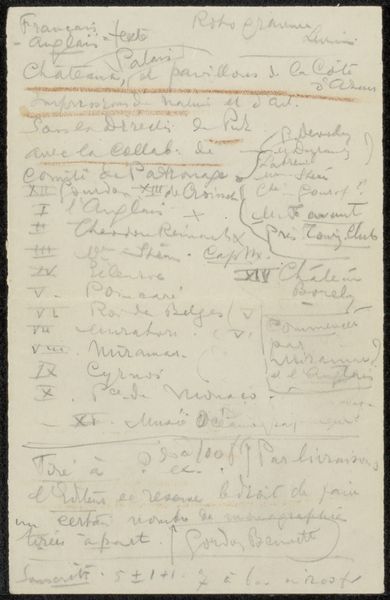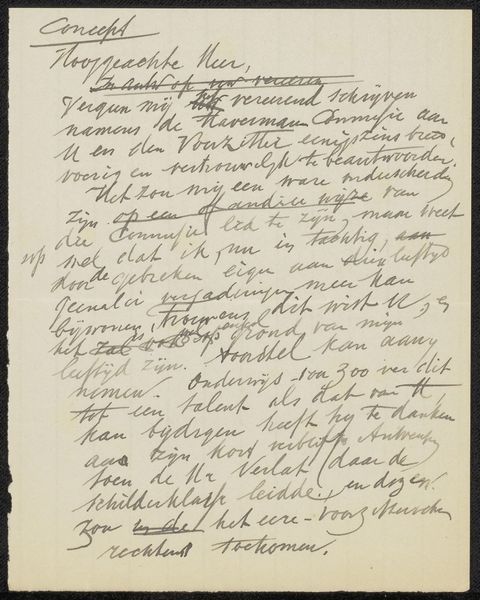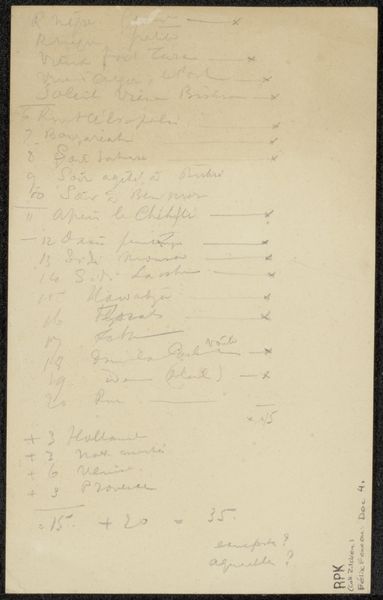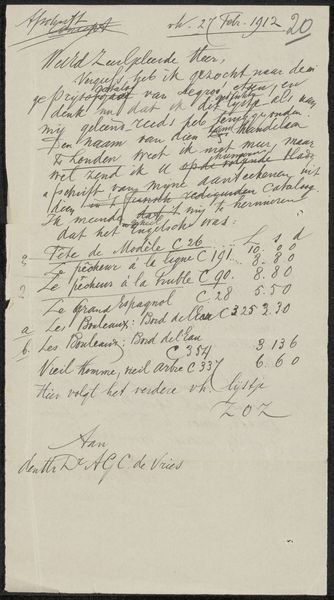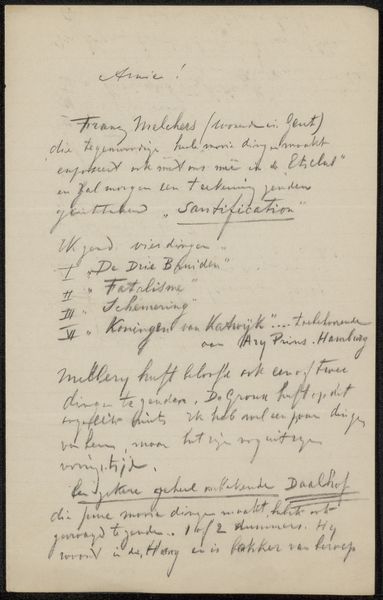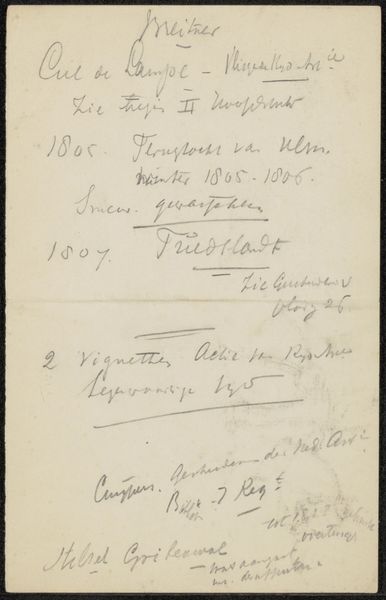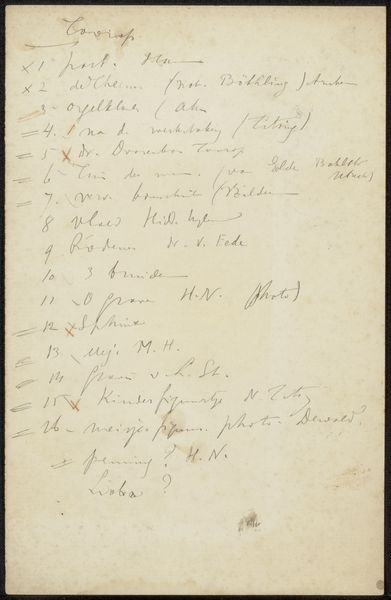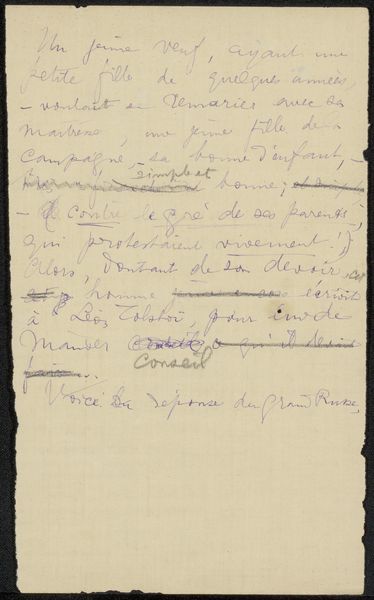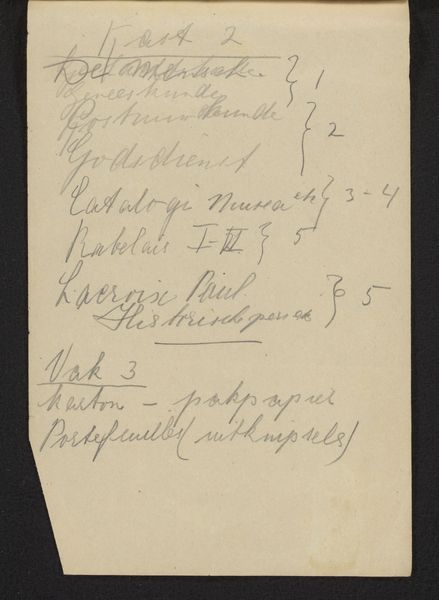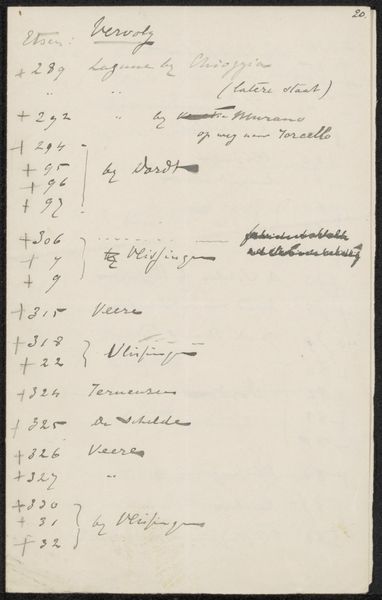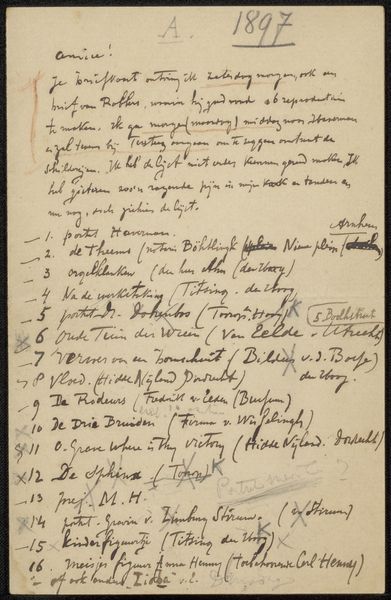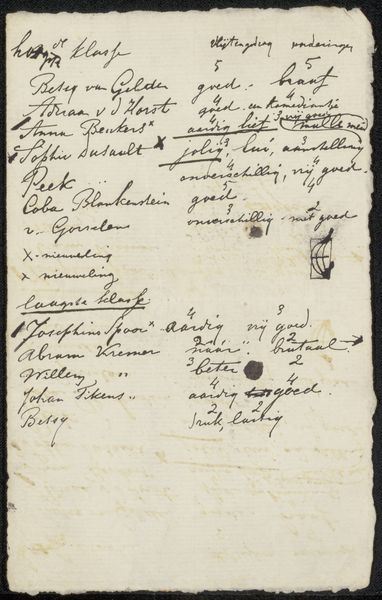
drawing, print, paper, ink, graphite, pen
#
drawing
#
comic strip sketch
# print
#
sketch book
#
hand drawn type
#
paper
#
personal sketchbook
#
ink
#
ink drawing experimentation
#
pen-ink sketch
#
pen work
#
graphite
#
sketchbook drawing
#
pen
#
storyboard and sketchbook work
#
sketchbook art
Copyright: Rijks Museum: Open Domain
Editor: This is "Aantekening uit archief Philip Zilcken," created sometime between 1867 and 1930. It’s a mixed media piece using drawing, print, ink, graphite, and paper, held at the Rijksmuseum. It looks like a page from a sketchbook, filled with scribbled notes and names. I find it quite intriguing how personal it feels, like a peek into the artist’s mind. What do you see in this work? Curator: What immediately grabs my attention is the intersection of the public and private realms. This wasn't intended as a finished piece for display, yet here it is, in a museum. Its display challenges our assumptions about what constitutes "art" worthy of institutional preservation. Zilcken was a notable figure, and this archival peek encourages us to consider the institutional forces that elevate certain individuals and their ephemera into the public sphere, doesn't it? Editor: That's a really interesting point, about how it challenges what gets considered art. Were sketchbooks commonly shown in museums back then? Curator: Not usually. The late 19th and early 20th centuries witnessed a growing fascination with the artist's creative process, reflected in exhibitions of preparatory sketches, but showing raw, unedited notes is another matter. These notations and their placement now make them interesting when maybe they weren't before the notes got here to a museum, displayed to the public. The writing appears to list names, addresses, costs, or is it a to-do list? What do you make of them? Editor: I can't quite decipher the meanings, but it's like a historical treasure map. It also makes me think about Zilcken's social network and the cultural scene he was a part of. Curator: Precisely! It’s a network rendered visible. It raises the important point about how archives and institutions curate narratives around artists, choosing which aspects of their lives to highlight and preserve. Editor: So it's almost a curated glimpse of the artist’s world. Curator: Exactly. It compels us to reflect on the power dynamics inherent in how art history is written and displayed, including what gets remembered and what's erased. Editor: That’s given me a completely different way of thinking about sketchbook pages, it really highlights that what seems private can become very public, shaping legacy. Curator: And vice-versa. By examining art, not as isolated objects but as products of specific cultural and institutional forces, we come closer to understanding the art's dynamic relation with the viewing public.
Comments
No comments
Be the first to comment and join the conversation on the ultimate creative platform.

